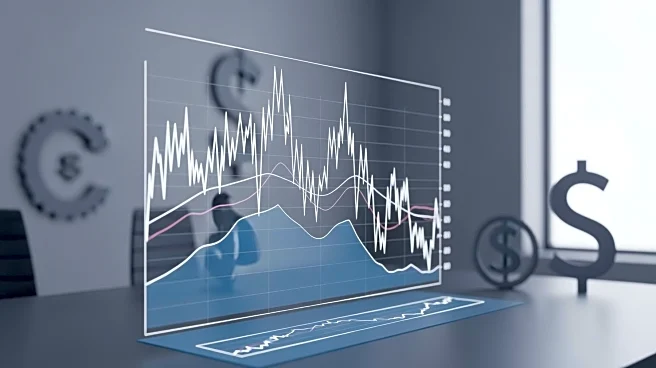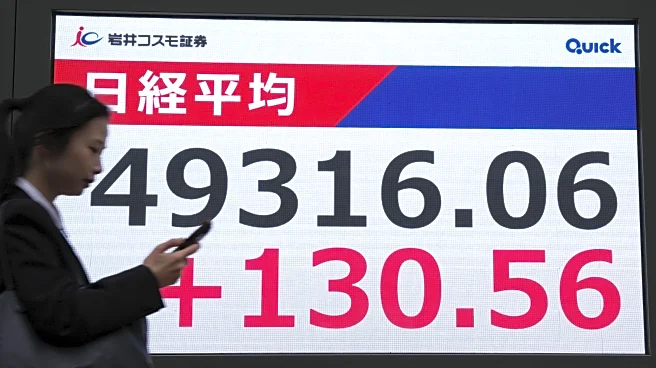What's Happening?
Gold prices experienced a decline of 2% on Tuesday as investors took profits following a record high in the previous session. Spot gold was priced at $4,264.91 per ounce, down from the all-time high of $4,381.21
reached on Monday. U.S. gold futures for December delivery also fell by 1.9% to $4,278.50 per ounce. The dollar index rose by 0.3%, making gold more expensive for holders of other currencies. The recent surge in gold prices, which have increased by 63% this year, has been driven by geopolitical and economic uncertainties, sustained central bank buying, strong investment demand, and expectations of U.S. interest rate cuts. Investors are now focusing on the upcoming U.S. consumer price index (CPI) data, expected to show a 3.1% year-over-year increase for September, which could reinforce market expectations for a Federal Reserve interest rate cut.
Why It's Important?
The decline in gold prices is significant as it reflects investor behavior in response to economic indicators and monetary policy expectations. Gold, a non-yielding asset, typically benefits from a low-interest-rate environment, making it attractive during times of economic uncertainty. The anticipated CPI data and potential Federal Reserve interest rate cuts could further influence gold prices and investor strategies. Additionally, the movement in gold prices impacts related markets, including silver, platinum, and palladium, which also saw declines. The broader implications for the U.S. economy include potential shifts in investment patterns and currency valuations, affecting both domestic and international financial markets.
What's Next?
Investors are closely monitoring the release of the U.S. CPI data on Friday, which is expected to influence Federal Reserve policy decisions. A 3.1% year-over-year increase in CPI could lead to a 25 basis point interest rate cut at the Federal Reserve's meeting next week. This decision will be pivotal in shaping future market dynamics, particularly for non-yielding assets like gold. Market participants who have not yet engaged in the gold rally may seek opportunities to enter the market if prices experience further setbacks. Additionally, easing trade tensions between the U.S. and China could impact global economic conditions and investor sentiment.
Beyond the Headlines
The fluctuations in gold prices highlight the complex interplay between geopolitical events, economic indicators, and investor behavior. As central banks continue to buy gold and investment demand remains strong, the precious metal serves as a barometer for economic stability and investor confidence. The potential interest rate cuts by the Federal Reserve could have long-term implications for inflation, currency strength, and global trade dynamics. Moreover, the liquidity constraints in the precious metals market, particularly for silver, are being addressed through increased flows from the U.S. and China, which may stabilize market conditions.












